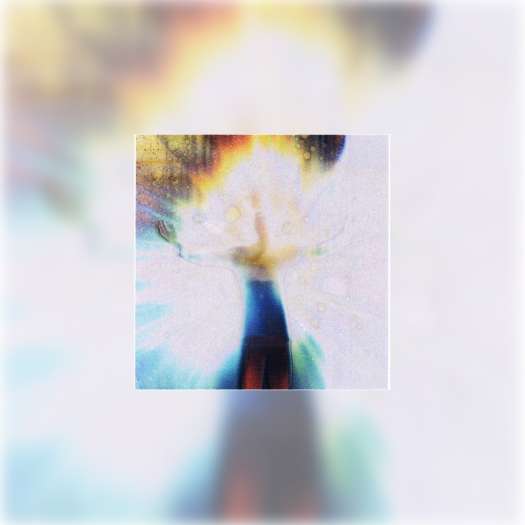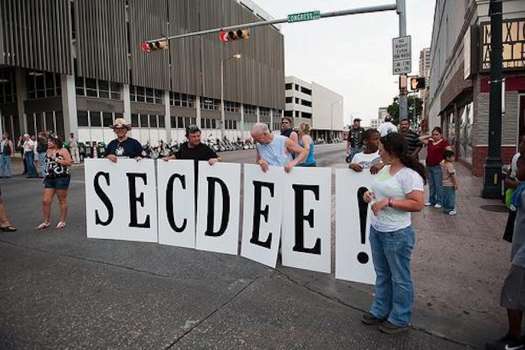The 70's were an interesting time for science fiction cinema. Stanley Kubrick and Arthur C. Clarke had already changed the game with 2001: A Space Oddity in '68, reaching new heights of philosophical insight and cinematic technique for an English language genre picture.
Outside of that masterful work, science fiction began to crop up that was extremely campy, but drew inspiration from serious works of speculative fiction concerned with environmental issues like pollution, overpopulation and speculation about what would happen when the resource addiction of our culture passed the point of critical mass.
Based on Harry Harrison's novel Make Room! Make Room!, Soylent Green brought the scary spectre of biomass imbalance into mainstream awareness three years before Logan's Run attempted to further the conversation in 1976.
Already a veteran of directing thoughtful socially questioning sci-fi as the man behind the lens of the big screen version of George Orwell's 1984, Michael Anderson took some liberties in adapting William F. Nolan and George Clayton Johnson's dystopic novel. The core concept remains the same: an agent of authority in a hedonistic future society who controls resources by limiting the age of its citizens is tasked with infiltrating a group of "runners" – those who refuse to participate in a ritualized culling once their time is up. But Anderson shifts minor elements like the age cap – from twenty-one to thirty – to more explicitly reflect the hippie culture ageism adage "don't trust anyone over thirty!" and makes other alternations to save on budget and generally beef up the action component for restless audiences.
The idea of a society in which automation has freed its citizens to indulge almost exclusively in pursuits of leisure and the higher functions of governance are left to computers borrows from Kurt Vonnegut's Player Piano and Aldous Huxley's Brave New World, but in Anderson's hands these concepts are mostly left at the presentation phase.
Logan's Run is packed with great ideas but is left waning in execution, especially when revisited through the lens of age. Other than being naïve automatons that are conditioned to mindlessly follow orders, yet still have an underdeveloped capacity for reason, the characterizations of Logan 5 (Michael York), Jessica 6 (Jenny Agutter) and Francis 7 (Richard Jordan) are pretty feeble.
This is despite a nearly two-hour runtime that sags in more than a few places. Some of the cracks in Logan's Run's longevity can be blamed on the inexorable progress of technology, but it's ultimately human error to rely so heavily on modern cutting edge equipment to represent the future.
The film's distinctly dated score is a prime example, using synthesizer arpeggios and wave modulation effects that I'm sure sounded positively out there at the time, but are now artefacts as garish and laughable as the wispy disco-hippie togas everyone is clothed in.
Little things, like simple continuity errors, vestiges of the novel's plot that seem nonsensical out of context – runner executioners being called Sandmen makes more sense when the culling method is sleeping gas, as in the book, rather than a bizarre faux-rebirth ceremony called "Carrousel" – and inexcusably lazy special effects – we're talking sub-Barbarella here – could have been avoided with a little more cash or a lot more ingenuity.
Logan's Run is a well-intentioned entry in the post-post apocalyptic cinema cannon that's absolutely worth seeing, but one that's screaming for a remake artistically capable of representing the story's grand aspirations.
Logan's Run screens at the TIFF Bell Lightbox as part of the Countdown to Armageddon screening series at 7pm on Saturday, December 15th.
(MGM)Outside of that masterful work, science fiction began to crop up that was extremely campy, but drew inspiration from serious works of speculative fiction concerned with environmental issues like pollution, overpopulation and speculation about what would happen when the resource addiction of our culture passed the point of critical mass.
Based on Harry Harrison's novel Make Room! Make Room!, Soylent Green brought the scary spectre of biomass imbalance into mainstream awareness three years before Logan's Run attempted to further the conversation in 1976.
Already a veteran of directing thoughtful socially questioning sci-fi as the man behind the lens of the big screen version of George Orwell's 1984, Michael Anderson took some liberties in adapting William F. Nolan and George Clayton Johnson's dystopic novel. The core concept remains the same: an agent of authority in a hedonistic future society who controls resources by limiting the age of its citizens is tasked with infiltrating a group of "runners" – those who refuse to participate in a ritualized culling once their time is up. But Anderson shifts minor elements like the age cap – from twenty-one to thirty – to more explicitly reflect the hippie culture ageism adage "don't trust anyone over thirty!" and makes other alternations to save on budget and generally beef up the action component for restless audiences.
The idea of a society in which automation has freed its citizens to indulge almost exclusively in pursuits of leisure and the higher functions of governance are left to computers borrows from Kurt Vonnegut's Player Piano and Aldous Huxley's Brave New World, but in Anderson's hands these concepts are mostly left at the presentation phase.
Logan's Run is packed with great ideas but is left waning in execution, especially when revisited through the lens of age. Other than being naïve automatons that are conditioned to mindlessly follow orders, yet still have an underdeveloped capacity for reason, the characterizations of Logan 5 (Michael York), Jessica 6 (Jenny Agutter) and Francis 7 (Richard Jordan) are pretty feeble.
This is despite a nearly two-hour runtime that sags in more than a few places. Some of the cracks in Logan's Run's longevity can be blamed on the inexorable progress of technology, but it's ultimately human error to rely so heavily on modern cutting edge equipment to represent the future.
The film's distinctly dated score is a prime example, using synthesizer arpeggios and wave modulation effects that I'm sure sounded positively out there at the time, but are now artefacts as garish and laughable as the wispy disco-hippie togas everyone is clothed in.
Little things, like simple continuity errors, vestiges of the novel's plot that seem nonsensical out of context – runner executioners being called Sandmen makes more sense when the culling method is sleeping gas, as in the book, rather than a bizarre faux-rebirth ceremony called "Carrousel" – and inexcusably lazy special effects – we're talking sub-Barbarella here – could have been avoided with a little more cash or a lot more ingenuity.
Logan's Run is a well-intentioned entry in the post-post apocalyptic cinema cannon that's absolutely worth seeing, but one that's screaming for a remake artistically capable of representing the story's grand aspirations.
Logan's Run screens at the TIFF Bell Lightbox as part of the Countdown to Armageddon screening series at 7pm on Saturday, December 15th.




